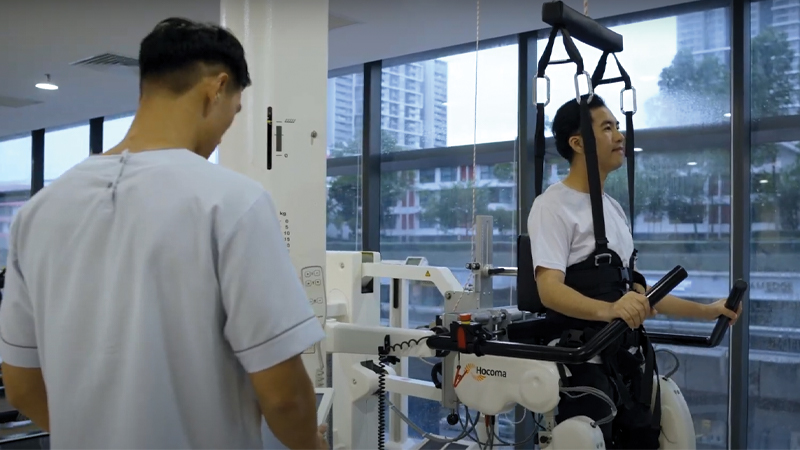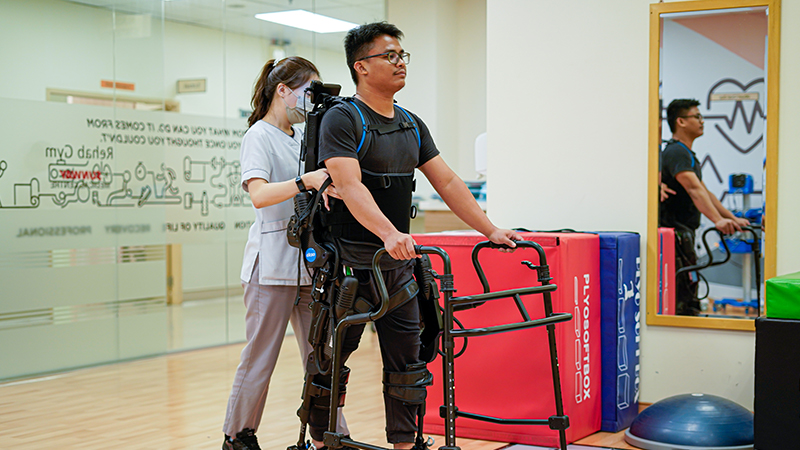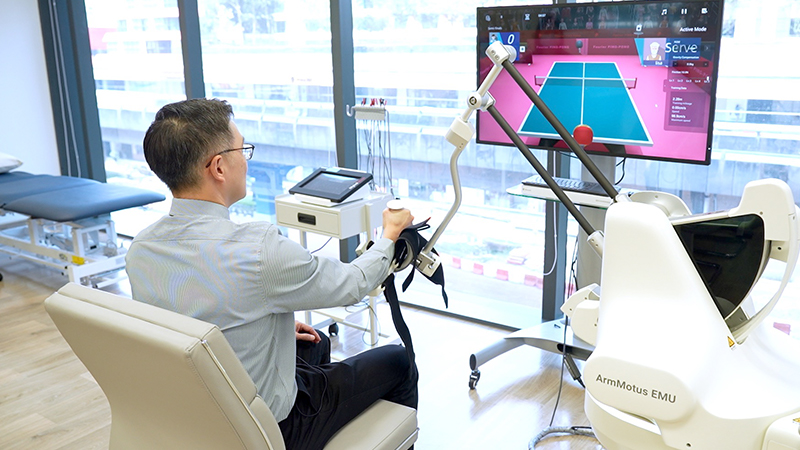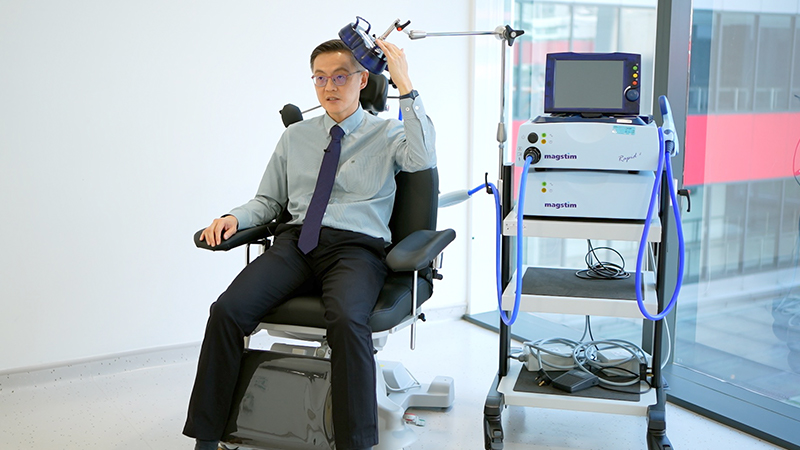
Lokomat Pro V5
The Lokomat Pro V5 is a state-of-the-art robotic-assisted therapy system designed to enhance rehabilitation for individuals with movement impairments. This advanced device uses a combination of robotic exoskeletons and a treadmill to help patients with conditions like stroke, spinal cord injury, or neurological disorders improve their walking ability. By supporting and guiding the patient's legs through a natural walking pattern, the Lokomat Pro V5 assists in retraining and strengthening muscles, improving gait, and promoting overall mobility.The system is highly customisable, allowing therapists to adjust support levels and difficulty based on each patient’s needs.

EksoNR
The EksoNR is an advanced robotic exoskeleton designed to assist individuals with disabilities in regaining mobility through specialised gaiety training. These wearable exoskeletons are designed to support and guide individuals with walking impairments through a natural walking motion. They feature motors at the hips and knees to assist with movement, helping to improve standing and walking abilities across a wide range of conditions. One of the key benefits is their ability to allow natural movement of the body and pelvis, which some research suggests can lead to more effective training compared to traditional, more restrictive methods.


EMU
EMU is an advanced robotic therapy device that aids in arm and shoulder rehabilitation, particularly for those recovering from strokes or injuries. It used advanced robotics to support and guide the arm through a variety of movements, providing adjustable assistance based on the patient’s needs. What makes EMU unique is its interactive approach, using activities like table tennis to make therapy both enjoyable and effective.

Repetitive Transcranial Magnetic Stimulation (rTMS)
Repetitive Transcranial Magnetic Stimulation (rTMS) is a cutting-edge, non-invasive therapy designed to treat various neurological and psychiatric conditions. It uses magnetic pulses to stimulate specific areas of the brain, aiming to improve symptoms for patients with issues like depression, anxiety disorders, chronic migraines, and even stroke recovery. The procedure is painless, doesn’t require anesthesia, and allows patients to quickly return to their daily activities after each session.






